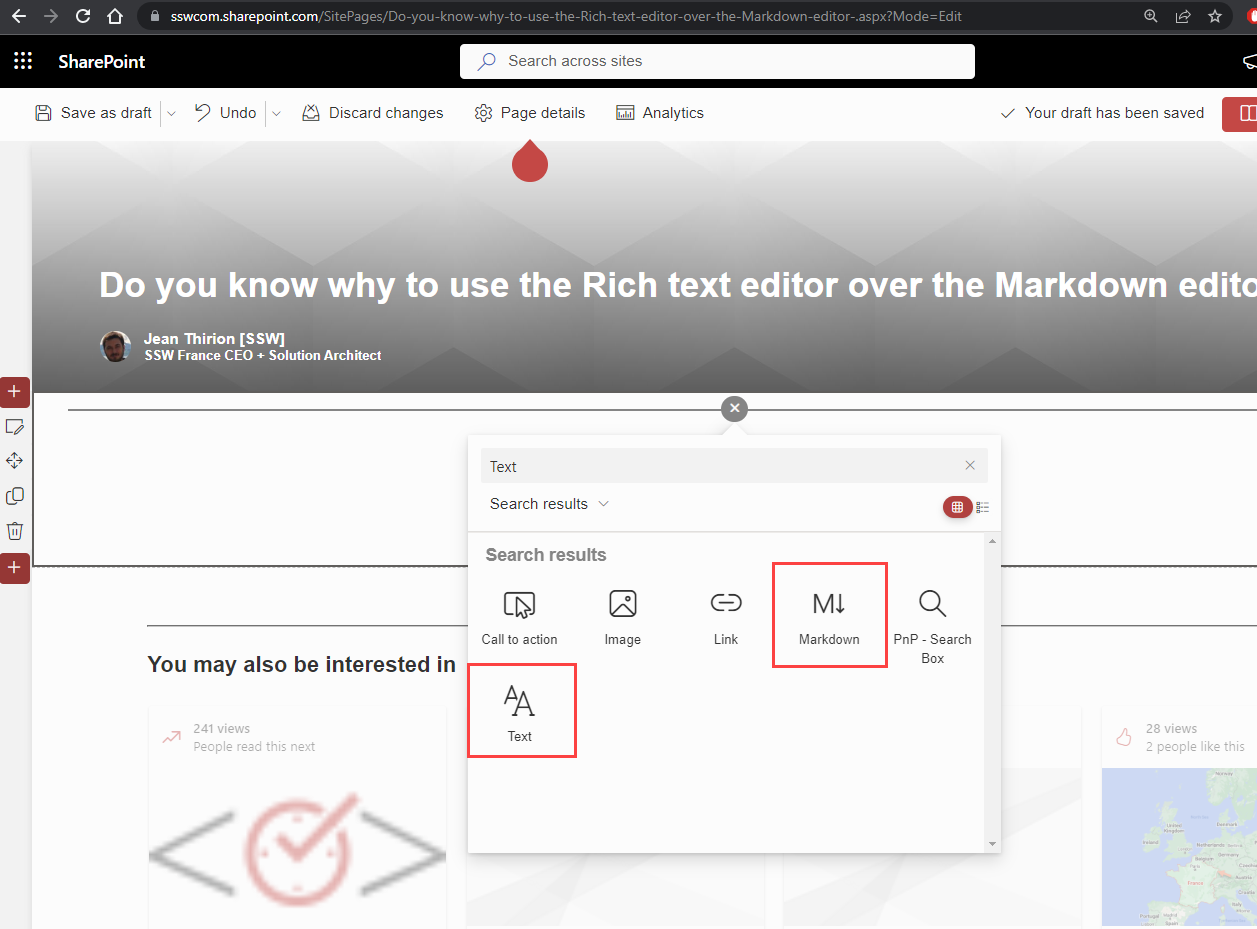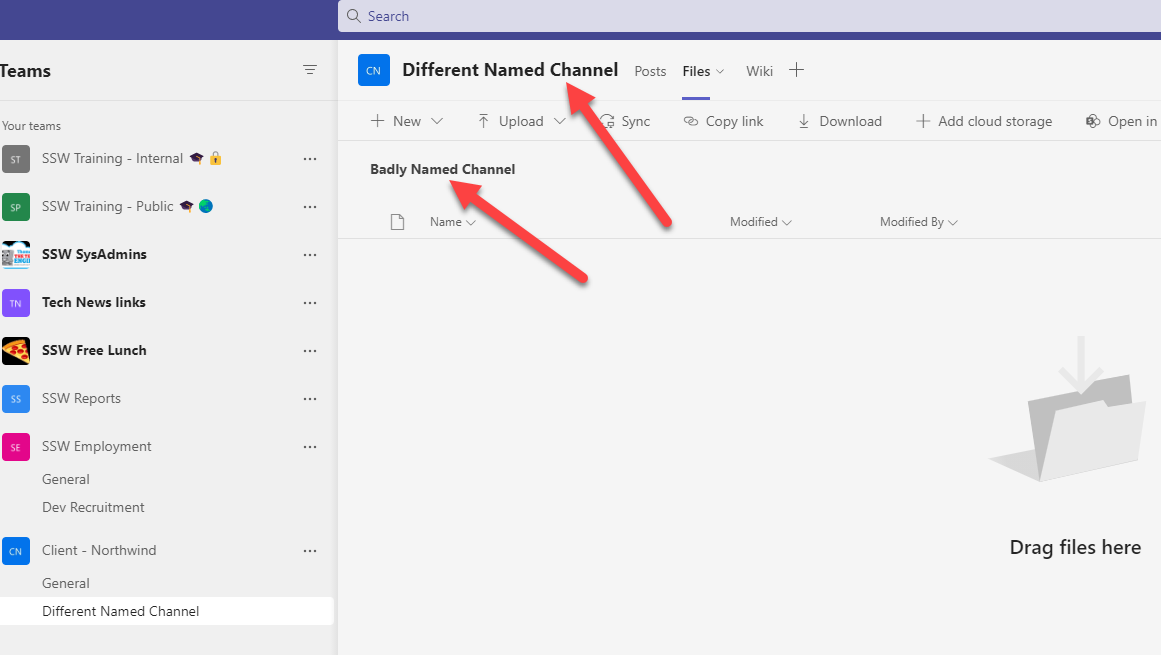Want to get your organization using SharePoint to collaborate? Check SSW's SharePoint consulting page.
When adding a friendly URL, please avoid using specific characters like
+ : # & , ) ( ! \ } { @ / = $(and so on) due to these reasons:When naming documents and images, use descriptive words and kebab-case (where you separate words with hyphens) to make your files more easily discoverable.
SharePoint search is a powerful tool for discovering information. Here are some tips to make sure you are getting the most from it. There are two things to consider regarding SharePoint search; firstly, how you save information to SharePoint to be more easily discoverable; secondly, how to perform searches within SharePoint.
If you find a mistake on a SharePoint page, you should find who made the change before you fix it. That way you can inform the person of their mistake.
As long as you are using the Text Webpart (aka the Rich text editor), you can easily see the exact changes made in each version of the page. See the advantages of the Text Webpart in this rule: Do you know why to use the Rich text editor over the Markdown editor?
When creating a SharePoint Modern page, you can use many different webparts to enrich your content - Videos, Embedded PowerBI, and many more.
When you want to add plain text to a page, you have two choices: Text (or Rich Text) Webpart, or Markdown WebPart.

Figure: The two common types of Text WebParts - "Text" and "Markdown"
Document libraries in SharePoint 2016 are much better. The keyboard shortcuts are:
Watch Adam Cogan explaining why you should use "Open with Explorer" over OneDrive (formerly called SkyDrive):
/***** Update on Jul 2018 ******/
With the latest version of OneDrive,
- It maps the folder in a second and shows the document previews without actually download the files. Files will be downloaded when you double click them or set their parent folder as “always available locally”, then they will show a “green tick” in "status" column to indicate that the files are available locally.
- You can select sub folders you want to sync on your computer.
Considering the above two points, plus "Explorer view" is being decommissioned by Microsoft Mordern pages, we'd recommend you to use OneDrive over "Explorer view" now.
Have you ever made a spelling mistake when you named a Teams channel? Have you then tried to rename the Channel? If so you will notice that the underlying SharePoint folder is still named incorrectly.

Figure: Unwanted name on channel
If you are checking your sites permissions regularly you will probably notice a lot of unique permissions being applied.

❌ Figure: Some items may have unique permissions
The default "Copy Link" setting in SharePoint is usually set to "People from your organization can view this document". This creates a unique sharing link each time it is used, giving people access to the file even if they didn't already. The consequence in SharePoint is that unique permissions are applied to the individual items breaking permission inheritance. It also has performance implications. Links should instead be created with the "People with existing access" setting.
It's important for all your SharePoint Sites to be as consistent as possible. This helps users' navigation through new pages as they know exactly where to look.
One of the annoying things with SharePoint document and page libraries is that users often accidentally leave checked out files, that prevents others from modifying them.
In the past, Wiki pages were a great way to store content in SharePoint. These days, with advancements in browser and smartphone capabilities, Word Documents are a better place to store content.